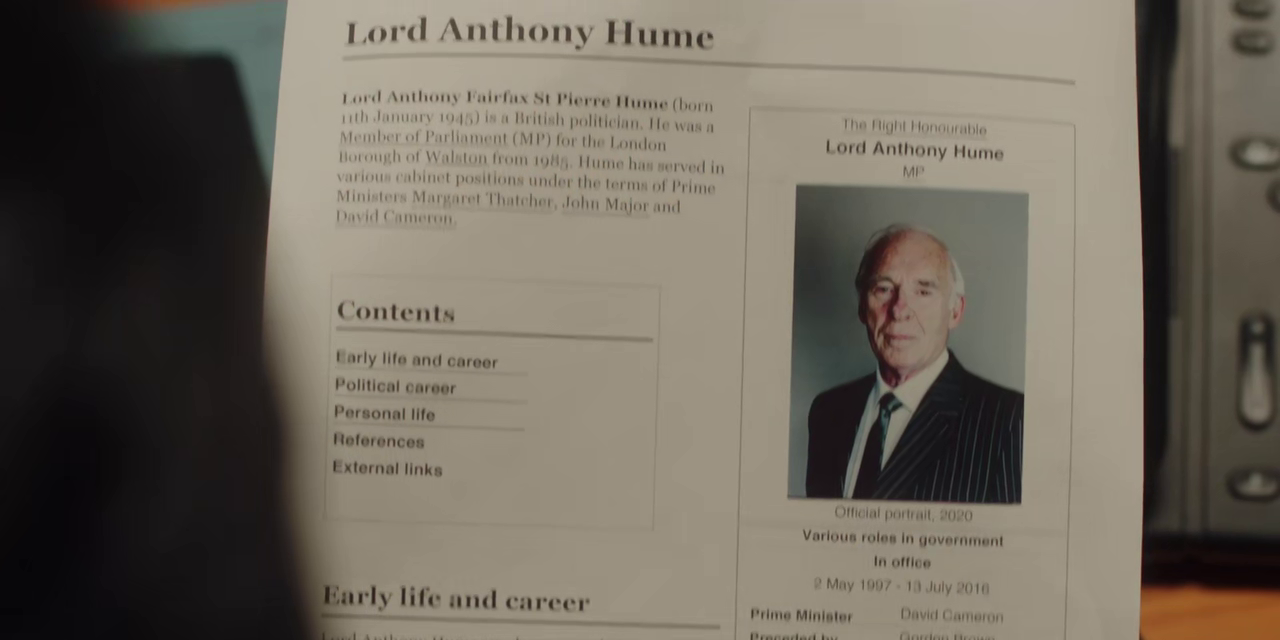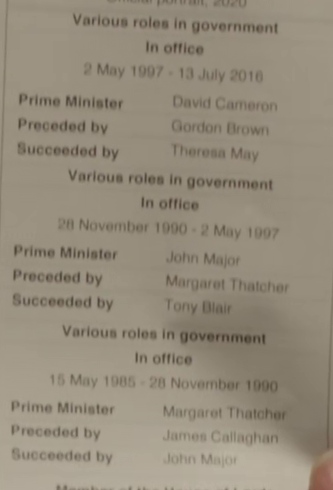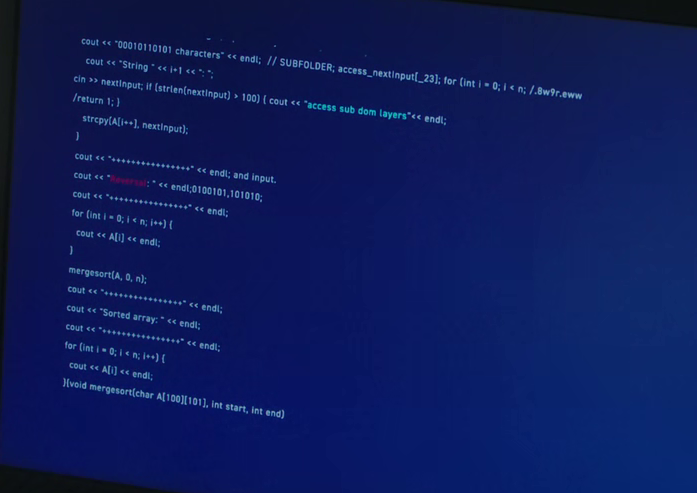Season five of the great ITV series Unforgotten aired in March and April. In one episode a detective does some research on someone involved in the case, which turns out be to looking him up on Wikipedia. (Fair enough—that’s basic OSINT.)
The camera scrolls down a printout of the page. Here’s the top:

And some more:

Here’s a detail of the infobox on the right-hand side:

That’s a gaffed version of the officeholder infobox. Look at how it’s used in the entry for George Osborne, for example.

For each office held, the infobox should list the prime minister at the time, who held the office before, and who held it after. In the Unforgotten version it says “Various roles in government in office” and the prime minister, but then the predecessor and successor prime ministers. The dates for John Major’s tenure are correct, but the starting date for Thatcher is odd, and at the top the 1997–2016 stuff makes no sense.
It was more than good enough for a quick skim on the show, and the prop maker did a fine job. Wikipedia editors love to look at this kind of thing more closely, of course.
This screenshot of a digital forensics tool doesn’t pass muster, however.

That’s supposed to show what’s on a computer seized as evidence by the police. This is some of what it says:
cout << "++++++++++++++++" << endl; and input.
cout << "[red text]:"<< endl;0100101,101010;
cout << "++++++++++++++++" << endl;
for (int i = 0; i < n; i++) {
cout << A[i] << endl;
}
mergesort(A, 0, n);
cout << "++++++++++++++++" << endl;
cout << "Sorted array:" << endl;
cout << "++++++++++++++++" << endl;
That’s bogus C++. If I had to make a computer screen for that situation, I’d use a disk analyzer like WinDirStat and just run it on the computer in use.
Unforgotten is an excellent series. Highly recommended. Don’t let my pedantic complaint about three seconds of a computer display put you off.
 Miskatonic University Press
Miskatonic University Press